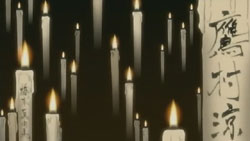 |
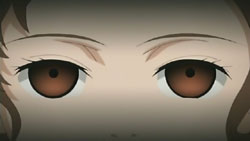 |
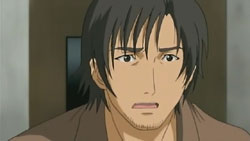 |
 |
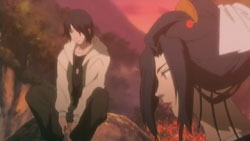 |
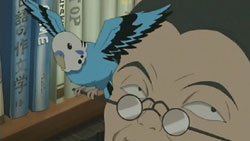 |
 |
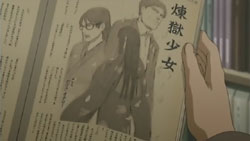 |
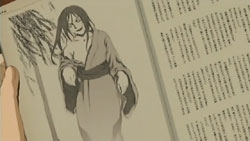 |
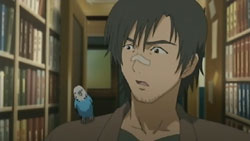 |
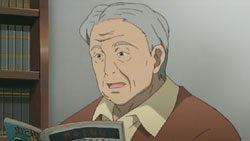 |
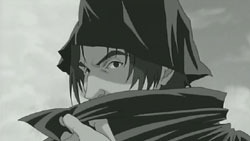 |
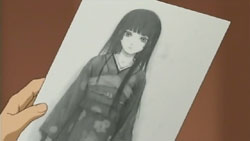 |
 |
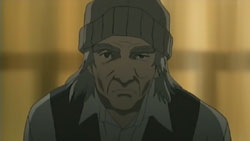 |
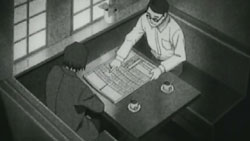 |
 |
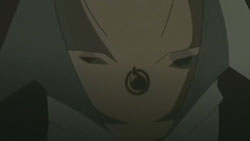 |
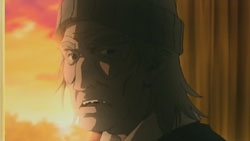 |
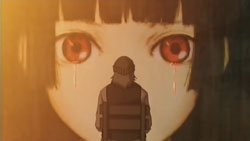 |
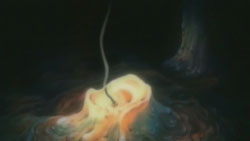 |
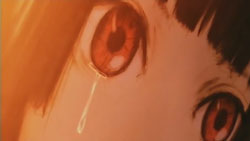 |
 |
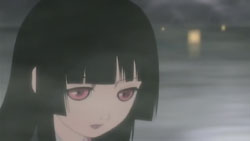 |
Summary:
After Tsugumi has a vision through Ai’s eyes of a secondhand bookstore, Hajime goes to investigate. He eventually finds the store, staffed by a gap-toothed owner and his parrot. An old magazine there has a story titled “Rengoku Shoujo” (Purgatory Girl). Hajime reads the article, published in 1950, and it turns out to be very similar to what he’s been told thus far about the Jigoku Shoujo, except that it refers to mailing a letter instead of using the Internet. Since the article is written under a pen name, Hajime tracks down the editor and learns that the real author is named Fukumoto – a man whose wife apparently committed suicide and his friend also died. Hajime is also given a drawing that Fukumoto originally did, one that looks exactly like Enma Ai.
On the outskirts of town, Hajime finds Fukumoto’s apartment, but Fukumoto lets Hajime in only after he mentions the Rengoku Shoujo and slides the picture under the door. Fukumoto, who’s grown old and doesn’t have much time left, tells Hajime that back then, the system used a blank space in the newspaper and people with a strong grudge could see what was in it. Only after his friend Ookouchi assaulted his wife, which led to her suicide, did he develop a grudge that allowed him to see those words. The Jigoku Shoujo showed up as soon as he mailed his letter and told him the usual conditions. Fukumoto then shows Hajime that he still bears the mark today. He tried everything to forget about his fate, but couldn’t. Instead, he ended up devoting himself to drawing Enma Ai, including a mural of her. Fukumoto tells Hajime that the only thing that he’s looking forward to is meeting Ai again because she is the one he’s thankful towards. When Hajime wonders what the Jigoku Shoujo is, Fukumoto notes that there have been texts about her dating back to the Edo period, though he thinks that it probably goes as far back as the Azuchi-Momoyama Era (late Sengoku Period, which is the late 1500s). To top it off, Hajime and Fukumoto realize that the reason he wrote about the Jigoku Shoujo, which he attributes to Ai’s will, was to convey the information to someone, and that someone is Hajime.
After Fukumoto touches up Ai’s eyes in the mural, he steps back and realizes that the painting has started to cry for him. His own candle soon burns out and he dies. When he opens his eyes again, he finds himself on Enma Ai’s boat and notes that Ai hasn’t changed since he last saw her. He then asks her if he’ll meet Ookouchi again, and Ai replies that hell is quite big.
This is an important episode about Ai and the system in the past, though I have to say that I’m a slightly disappointed because I was hoping for an episode about Tsugumi and Ai’s relationship or about Ai’s own past. Still, there’s a lot revealed this episode, starting with how the system worked back then and how Ai’s probably been around for hundreds of years. What I’m curious about is why Ai is wearing her special kimono in the flashback when she gives Fukumoto the doll. Isn’t that the kimono she dons to send people to hell? And if she’s been around for so long, then why is she normally always wearing the school sailor uniform? I’ve always attributed that to having something to do with her past.
They’re giving more and more hints that maybe Ai isn’t so happy doing this and/or is looking for a way out. With the revelation that the intent of the story Fukumoto wrote was for Hajime, we’re led to believe that perhaps Ai had planned this long ago and has been waiting for someone to figure it out. And then there are the tears from the mural, which I think is a really nice touch. Ai, who normally doesn’t show emotion, is indirectly crying for the victim (of a crime and of her system).
So, there are a lot of questions raised, but we don’t learn much about Ai’s past – which I assume is going to be left for a later episode. Next week seems to return to the normal format, though I’m wondering what they’re going to do for the next thirteen episodes if Hajime knows so much already. I guess we’ll have to wait and find out…

bleachhhhhhhhhhhhhhhhh……..
interesting episode thoughT_T
I was hoping this type of episode would’ve shown up about 3-4 episodes earlier. It appears that Ai does seem to adapt to the times – the Rengoku Shoujo used to use the newspaper, which was the way information got out, and the ad was blocked to anyone who wouldn’t have a need for their services. Now, Ai does the same thing by posting onto the Internet, which lets people submit their requests from the comfort of their own home. This suggests that her costume, too, may adapt depending on the time period involved – in our timeframe, people expect to see girls of Ai’s apparent age in serafuku or similar, if they’re appearing during school hours. Back then? Well, I’m not sure if the kimono would’ve been THE most appropriate outfit, but it was probably more appropriate than some things.
Still, I wish we’d gotten more of Ai’s past, or more Tsugumi interaction with Ai; we don’t know if she wants out of the job, though she is apparently somewhat unhappy with it… and she also doesn’t appear happy with Grandmother, to judge by how the last couple of cases have gone. It’s interesting, as well, to see how she doesn’t ‘play’ with either of the last two victims, the way she did with some of the others; of course, these ones are either repentant or didn’t really ‘deserve’ to go to Hell, at least not so much as the victims in previous instances have.
And was it just me, or did she seem touched when Fukumoto mentions that she’s beautiful, and that he wonders if he’ll see Ookouchi, given that he was responsible for sending the latter to Hell? Her answer suggests that there’s a special kind of purgatory for the people who use the services… although whether it’s more ‘merciful’ is something left untouched so far by the series.
Hey, I have a favor to ask:
Where do you guys usually find the Jigoku shoujo episodes 10? Cause me and my sister was looking for it but can’t find it ;~; I would appriciate it if you would tell me, thank you! ;~;
Wait, please delete my last entry, cause I’m not suppose to ask it, and plus I found it! >_
Looks like I’ve discovered this anime series really really late, lol.
And it looks like the show’s finally starting to pick up! I’m not sure how many people are familiar with Neil Gaiman’s Sandman series published by Vertigo, but I suspect that it might be heading in the same way that particular series ended.
Basically, I suspect Enmai Ai represents a particular point-of-view regarding the function of revenge — a point-of-view that may be growing increasingly irrelevant or out-of-touch with modern times. In other words, I get the strong feeling that Ai has been looking for her replacement for quite some time now…
Well, still following the episodes as they come. I’ll soon see if my guess is correct 😉
Oh yes, other allusions come to mind.
It seems possible that Enmai Ai, Grandmother and the spider may be a peculiar version of the Greek Fates, Clotho (the spinner, here represented by the spider), Lachesis (the measurer, perhaps Grandmother?) and Atropos (she who cuts the thread of life, ie, she brings death — Enmai Ai).
The allusion becomes even more plausibe when you consider how Atropos is sometimes portrayed as the most beautiful of the three Fates, and is at the same time, usually considered the most terrifying of the three.
i think its da other way around. i think clotho is probably da grandmother because clotho ‘spins da thread of life’ and lachesis is da spider as it ‘determines da length of the thread of life.’
just my two cents.XD